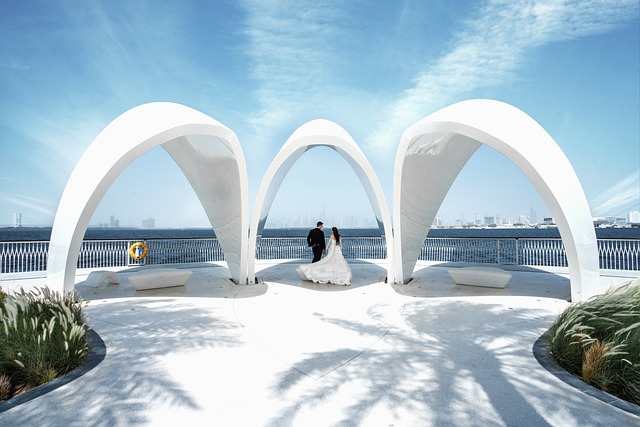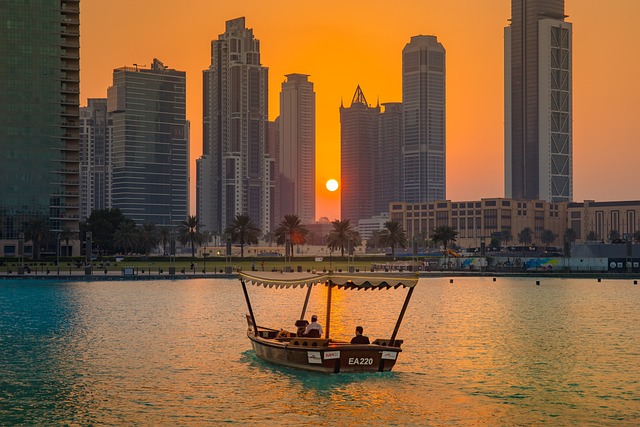Dubai’s Architectural Wonders: Where Tradition Meets Innovation
Nestled in the heart of the Arabian Peninsula, Dubai is a city that has transformed dramatically over the last few decades. Once a modest trading port, it has emerged as a global icon of modernity and innovation, showcasing an array of architectural wonders that blend tradition and contemporary design. This article delves deep into the architectural marvels of Dubai, exploring how they reflect the city’s rich heritage while embracing cutting-edge technology and innovative techniques.
Historical Context: The Foundation of Dubai’s Architectural Identity
To understand Dubai’s architecture, it is essential to acknowledge its historical context. The city’s development accelerated in the 20th century, spurred by the discovery of oil in the 1960s, which brought wealth and, consequently, the opportunity for ambitious construction projects. However, despite its rapid modernization, Dubai has remained committed to preserving its cultural heritage.
Traditional Emirati architecture is characterized by its use of local materials and methods that have evolved over centuries. Wind towers, known as barjeel, and fortified walls were essential elements for coping with the heat and securing communities in the pre-oil era. This legacy is beautifully echoed in contemporary designs that incorporate local influences, creating a unique architectural narrative that is distinctly Dubai.
The Iconic Burj Khalifa: A Testament to Ambition
Towering at a staggering 828 meters, the Burj Khalifa is not only the tallest building in the world but also an emblem of Dubai’s unyielding ambition. Completed in 2010, this skyscraper was designed by the renowned architectural firm Skidmore, Owings & Merrill, and its design was inspired by Islamic architecture and the local desert flowers. The building’s Y-shaped footprint allows for maximum views of the surrounding landscape while providing structural stability.
The Burj Khalifa features a series of setbacks that create a spiraling effect, leading up to the observation deck on the 148th floor. Visitors are treated to panoramic views of the city skyline and beyond, showcasing the remarkable urban landscape that Dubai has crafted. The building embodies not only technological advancement, with its state-of-the-art steel and concrete structure, but also the cultural essence of the nation it represents.
The Palm Jumeirah: Engineering Marvel of the 21st Century
An extraordinary feat of engineering, the artificial archipelago known as Palm Jumeirah is one of Dubai’s most recognized landmarks, resembling a palm tree from above. Launched in 2001, this man-made island demonstrates Dubai’s commitment to pushing the boundaries of architecture and engineering.
Spanning over 560 hectares, Palm Jumeirah is home to luxury hotels, residential villas, and a plethora of leisure and entertainment options. The island’s design reflects traditional Arabic motifs, as well as the natural beauty of the region. The fronds of the palm provide an unparalleled beachfront property, showcasing a blend of modern amenities while evoking the essence of Arabian hospitality.
The construction of Palm Jumeirah involved extensive land reclamation techniques and the innovative use of geotextiles to protect its structure from erosion. This architectural wonder epitomizes how Dubai merges innovation with aesthetic appeal, creating a destination that attracts millions of visitors each year.
The Dubai Frame: Bridging Past and Present
Completed in 2018, the Dubai Frame is a striking showcase of architecture that serves as both a functional structure and an artwork. Standing at 150 meters tall and 93 meters wide, this remarkable frame literally frames the skyline of Dubai, providing a unique perspective on the city’s growth and evolution.
Designed by architect Fernando Donis, the Dubai Frame is built of glass, concrete, and steel, symbolizing the historical and modern dichotomy of Dubai. Visitors can take a lift to the top, where they are greeted with breathtaking views of both the older parts of the city, such as Deira and Bur Dubai, as well as the futuristic skyline of Downtown Dubai.
At the ground level, the museum within the frame offers a narrative of Dubai’s past, present, and future, using interactive displays and multimedia experiences to engage visitors. The Dubai Frame embodies the city’s dedication to honoring its heritage while simultaneously looking forward toward innovation, making it a compelling architectural landmark.
The Museum of the Future: A Glimpse into Tomorrow
In a city celebrated for its futuristic skyline, the Museum of the Future stands out as a beacon of innovation, seamlessly blending architecture with technology. Opened in 2022, this unique structure is not just a museum; it’s a living laboratory dedicated to foresight and innovation across various domains, including health, education, and climate change.
Designed by the architectural firm Killa Design, the Museum of the Future features a distinctive torus shape, with a façade made of stainless steel and glass. The building is both aesthetically stunning and functionally designed to embody the concept of “the future” in every aspect of its structure. Decorated with intricate Arabic calligraphy, the museum’s exterior serves as a canvas for storytelling about the potentials of humanity.
Inside, the museum invites visitors to engage with immersive experiences aimed at prompting thoughts on future developments and advancing technologies. Each level showcases unique themes and features, presenting cutting-edge innovations while fostering a dialogue on the social impact of technological advancements. The Museum of the Future exemplifies how architecture can inspire visitors to think critically about their role in shaping what lies ahead.
Dubai’s Cultural Districts: Balancing Heritage and Modernity
While skyscrapers and luxury resorts dominate the skyline, Dubai’s architectural landscape also holds a collection of cultural districts that emphasize the beauty of its heritage. A prime example is the Al Fahidi Historical Neighborhood, which offers a glimpse into Dubai’s past through its preserved buildings made of coral and limestone, traditionally used in ancient Emirati architecture.
With its winding alleyways and wind towers, this cultural heritage site serves as an important reminder of the city’s origins and the lifestyle of its early inhabitants. Visitors can wander through art galleries, cultural spaces, and museums that narrate Dubai’s history, making it a vital bridge between past traditions and modern living.
In contrast, the Dubai Opera reflects a sophisticated blend of contemporary design and cultural expression. Located in the heart of downtown, this architectural gem resembles a traditional dhow boat and hosts various artistic and entertainment performances. The multi-faceted design is not only a visual marvel but also a functional space that accommodates a range of cultural activities from opera to concerts. It illustrates the city’s dedication to fostering a vibrant arts scene while embracing cutting-edge architectural sophistication.
The Role of Sustainability in Dubai’s Architecture
As the world increasingly prioritizes sustainability, Dubai is responding with a commitment to eco-friendly architectural practices. The city is home to numerous green buildings that employ environmentally responsible design principles.
One of the leading examples is the Sustainable City, a master-planned community that prioritizes renewable energy sources, waste management, and water conservation. Its design incorporates solar panels, electric vehicle charging stations, and urban farms, reflecting the city’s vision for a sustainable future.
Additionally, the development of the Mohammed bin Rashid Al Maktoum Solar Park stands as a monumental commitment to clean energy. Once completed, it is expected to be one of the largest solar parks in the world, providing a substantial portion of the city’s energy needs while exemplifying how architectural innovation can contribute to environmental sustainability.
Conclusion: The Future of Dubai’s Architectural Narrative
Dubai’s architectural wonders embody a unique narrative that intertwines the essence of its traditions with the ambitions of modernity. From the awe-inspiring heights of the Burj Khalifa to the cultural richness of the Al Fahidi Historical Neighborhood, the city tells a story of evolution, resilience, and forward-thinking.
As we look toward the future, Dubai will continue to redefine what is possible in architecture by blending sustainability with innovation, all while honoring the traditions that have shaped its identity. With visionary projects underway and a dedication to pushing boundaries, Dubai remains a beacon of architectural ingenuity and a testament to how a city can honor its past while embracing the possibilities of tomorrow.



